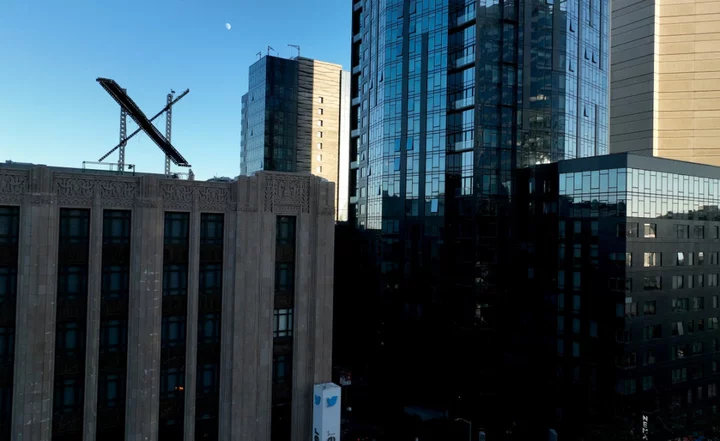You could be forgiven for thinking humans are helpless against extreme heat. All over the world, record high temperatures are raising concerns about heat stress, which has claimed more than 100 lives in India this year and killed over 60,000 people in Europe last summer. One obvious solution — adding more air conditioning — is catching on fast: Through 2050, an estimated 10 new AC units will be sold every second. That influx, though, threatens to exacerbate the climate crisis that necessitated it.
In some places and at particularly high temperatures, air conditioning may be the safest and most effective option for staying cool — but it isn’t the only one. Here are tips for coping with hotter days without increasing your carbon emissions.
Avoid AC — when you can.
Don’t underestimate the impact of a powerful fan. Fans replicate the best parts of a cool breeze — fast-moving air helps remove body heat — while using about 1% of the electricity of an AC unit.The US Environmental Protection Agency’s Excessive Heat Events Guidebook warns against depending entirely on fans when the heat index is above 99F (37.2C), but even then, using a fan in combination with AC allows you to set the latter at a higher temperature. That small adjustment could lead to a big reduction in your energy consumption — and your utility bill.
If you must use air conditioning, use it wisely.
Some basic rules of thumb can curtail your AC energy costs, with the added benefit of reducing emissions and strain on the grid. Those include making your air conditioner work smarter vs. harder — if you’re cooking in the kitchen and the AC unit is in the bedroom, for example, try putting up a thermal curtain between them. You can also conserve energy by avoiding cooling unoccupied spaces, such as bedrooms whose occupants are at work or school, or the entire house when no one is home.
Window AC units make this kind of compartmentalization easier, but many people with central air can also engage in temperature management by using a smart thermostat.
Last but not least, make sure your AC unit is the right size and efficiency for the space you’re trying to cool. An oversized air conditioner is more expensive and environmentally taxing, and can also leave your home more humid when it’s on. Meanwhile, if your AC dates back to the 1970s, the US Department of Energy says you can halve your energy use by replacing it with a newer model.
Bite the bullet and look into a heat pump.
Despite its name, a heat pump is also a cooling device — one far more energy-efficient than conventional AC. The most common version is an air-source heat pump, which uses liquid refrigerant in a copper coil to extract heat from the interior of a home, since warm air naturally moves toward the cold. The hot air is then vented outside the house.
Heat pumps are neither cheap to purchase or easy to put in: Equipment and installation costs range from $4,000 to $12,000 for an air-source pump, depending on the size, the brand and whether you use a ductless system. By contrast, central air costs about $7,000 and window units just a few hundred bucks. But depending on where you are, there might be incentives available. In the US, for example, the Inflation Reduction Act covers 30% of heat pump purchase and installation costs, with an annual cap of $2,000.
Heat pumps’ biggest selling point is that they check two boxes at once: In winter, the device can also keep you warm. One 2021 report found that a Seattle home equipped with a heat pump would save $228 each year compared to conventional cooling and heating. The heat pump also reduced the building’s carbon footprint by about a quarter.
Hook up with renewable energy sources.
Whether you’re using a fan, an air conditioner, a heat pump or some combination of the three, you can always up your game (er, down your carbon footprint) by seeking out renewable energy. The US has become a booming market for residential solar: 2022 was the sixth consecutive year of record new installations, according to the Solar Energy Industries Association.
You don’t even need a roof. In 21 US states and Washington DC, solar developers are starting to tap vacant land and empty rooftops near residential areas to boost capacity, one small-scale project at a time. If a local solar array isn’t an option, you might still be able to subscribe to a “community solar garden.” Subscribers make a monthly payment based on their electricity consumption, then receive a discount on their utility bill for the clean power the community solar garden supplies to the grid.
Make sure your home is insulated.If your house is drafty, your cooling appliance — whatever it may be — will have to work harder. That can be particularly painful when energy costs skyrocket; just ask the Texans who saw prices surge by 80% in a matter of hours last month. It never hurts to hire an energy auditor to identify where hot air sneaks in and to help you plug the leaks. In the US, an IRA tax credit will cover 30% of the audit cost, up to $150.
An energy audit might expose needed adjustments to your walls, doors and windows. It could also mean looking into a “cool roof,” which reflects sunlight and lowers the temperature of the building beneath. For certain houses, it’s even possible to install a “green roof” made of living vegetation, which provides cooling primarily through the evaporation of water from its plant surface.
New house, new you.If you just so happen to be planning your next home from scratch, don’t sleep on the importance of making it heat-resistant. One way to accomplish that is to consider an ultra energy-efficient structure known as a “passive home.”
Passive houses adhere to a set of design principles and specific construction materials, such as triple-pane windows, that make a home airtight. A passive structure can slash your energy consumption for cooling by as much as 90% compared to conventional homes in the same climate, according to Germany’s Passivhaus-Institut, which certifies such buildings. (In winter, passive houses also use less heat.) It might not be cheap: Passive single-family homes cost about 10% more to build than conventional ones, although that differential is less for multi-family buildings.
There is one catch. Passive houses fend off heat waves thanks to their outstanding insulation, but a well-insulated home can also trap internal heat generated by cooking, lighting and even human activity. To let insulation work for you rather than against you, draw curtains for shade, turn off home appliances when they’re not in use and embrace LED light bulbs. Once you manage to cool down the inside of your home, the insulation will help it stay that way.
Another way to build a heat-resistant home is by using compressed earth blocks, a type of construction material made largely from a sandy clay mixture. The technique originated in ancient Jordan, and 21st century architects have refined it to meet modern building codes. Each earth block can be up to 10 inches thick; since heat is transferred through the block at a pace of about one inch per hour, the walls keep interior temperatures down during a heat wave.









